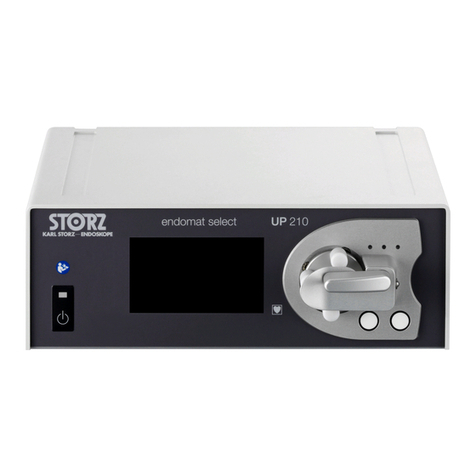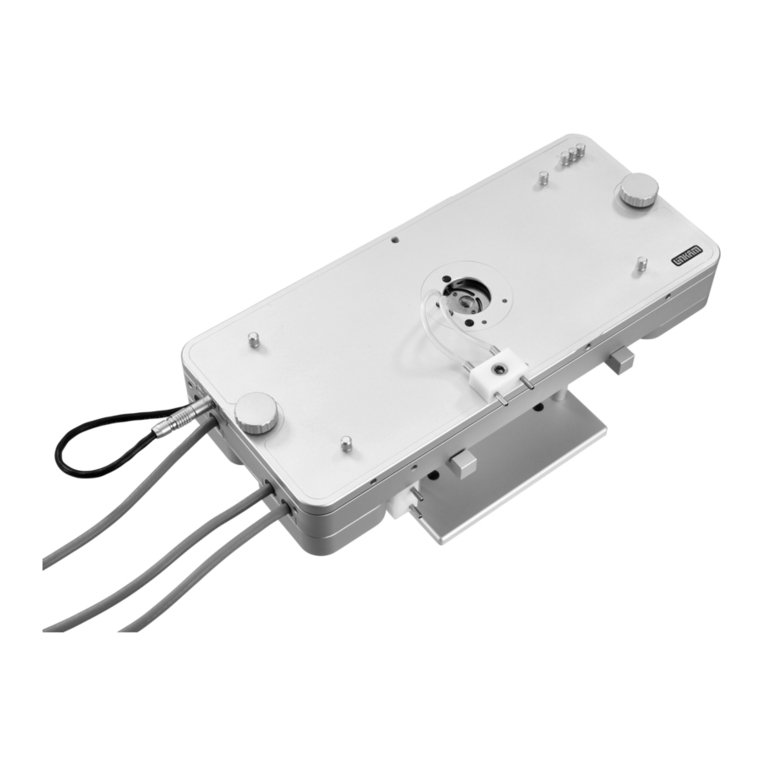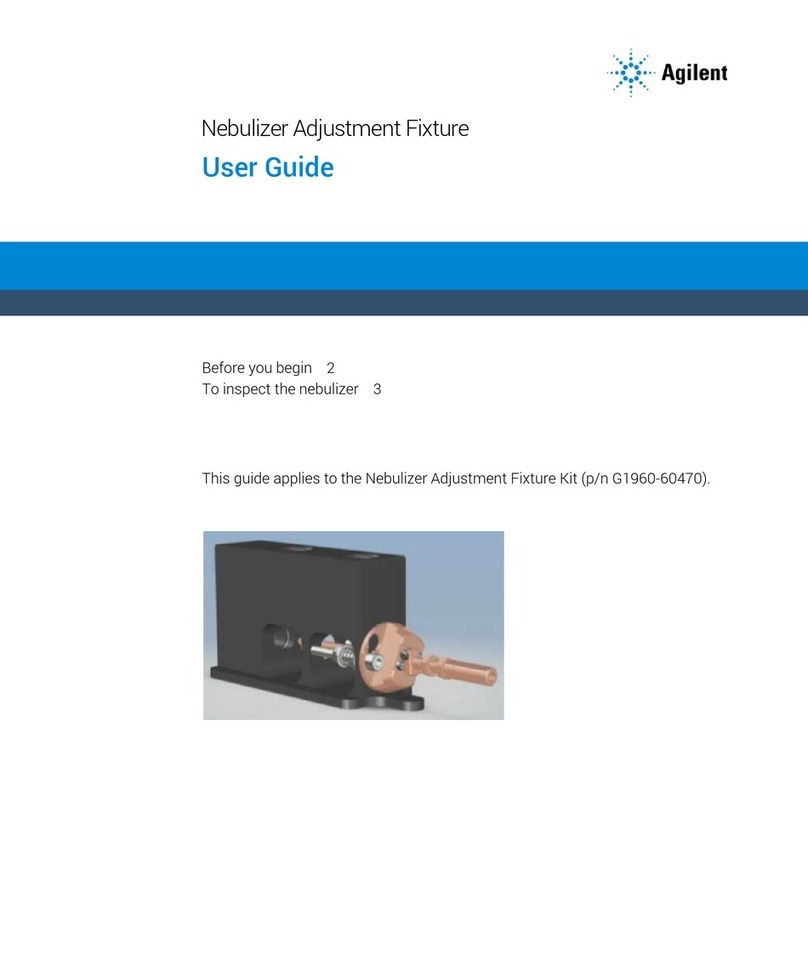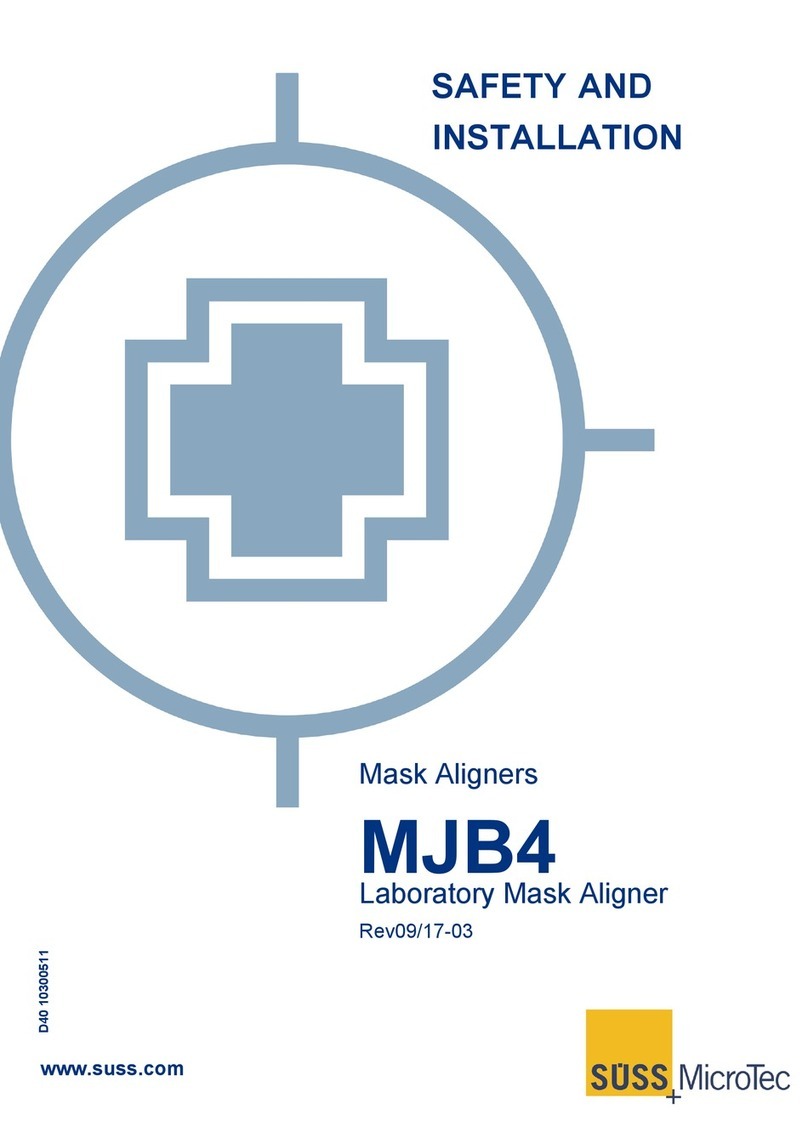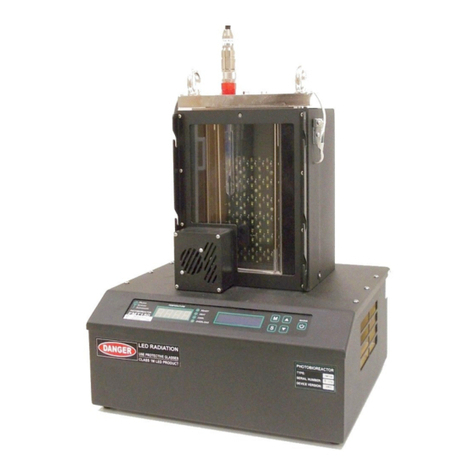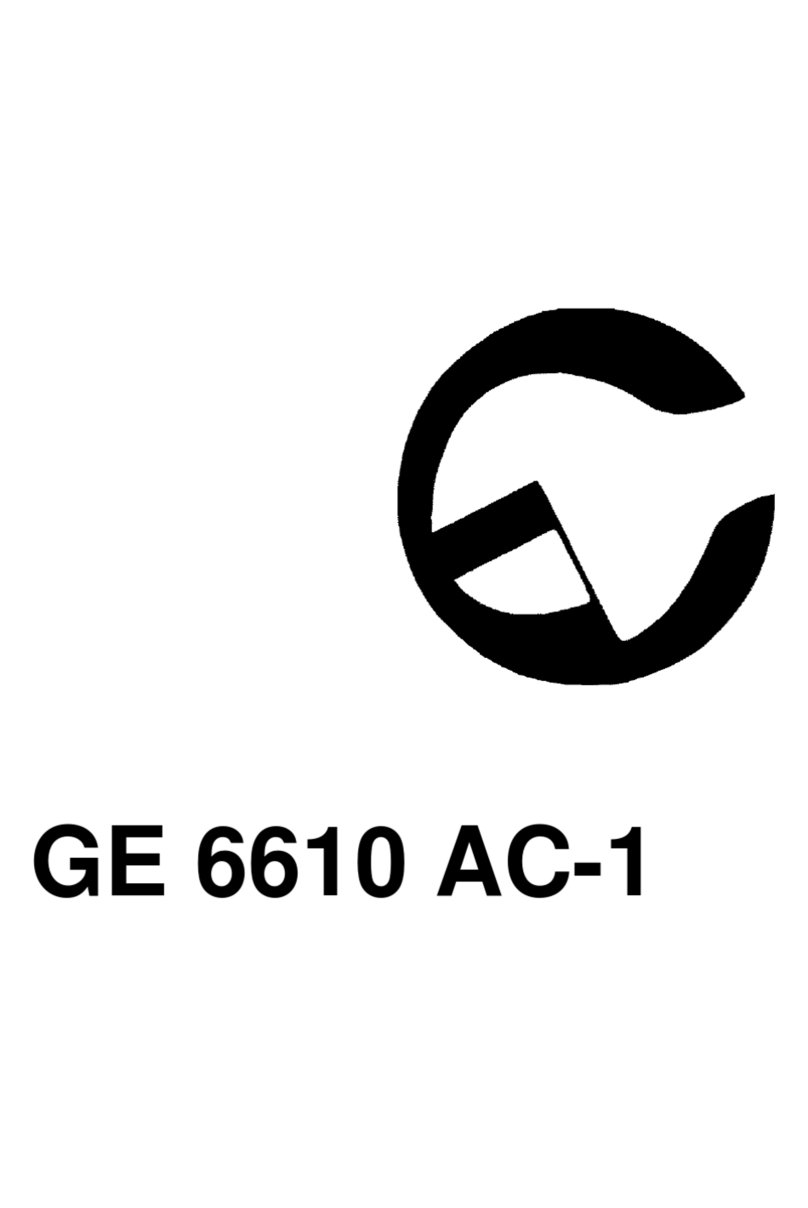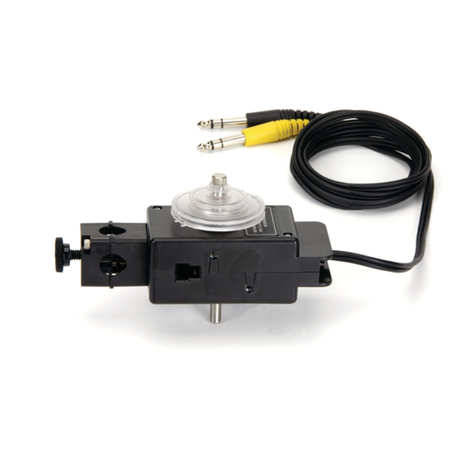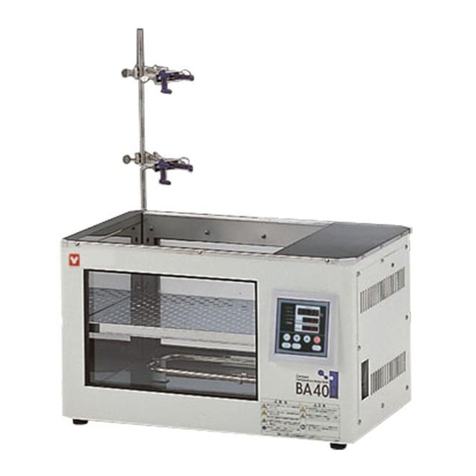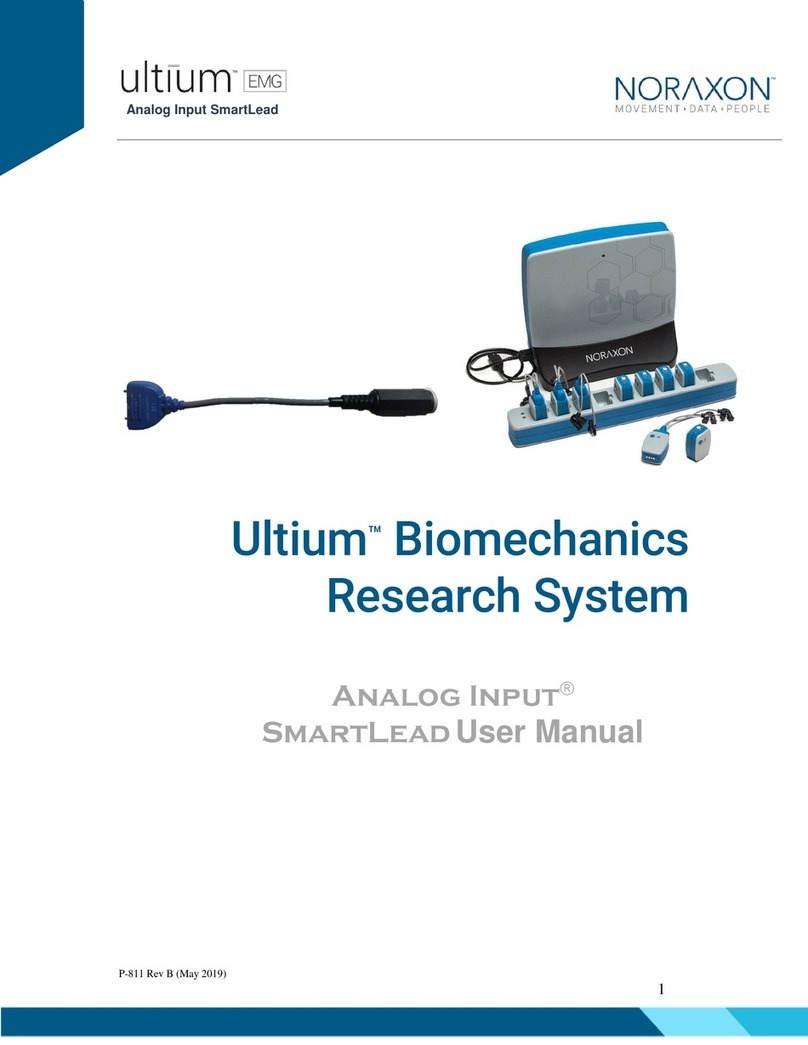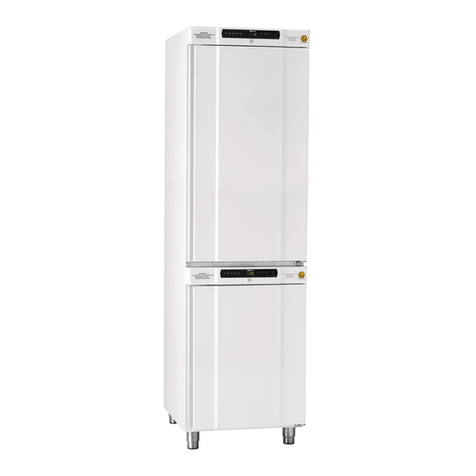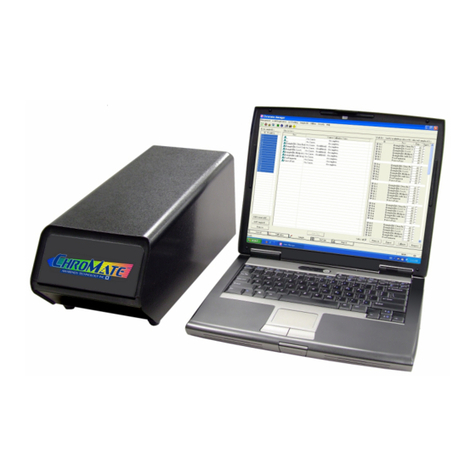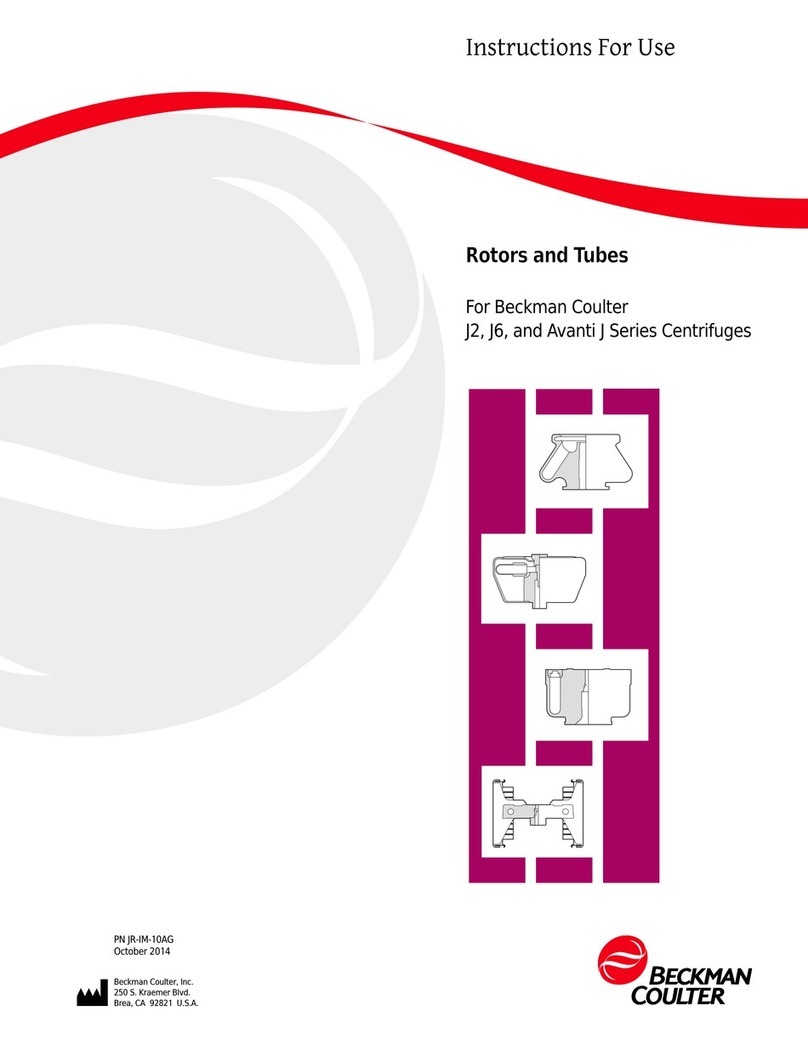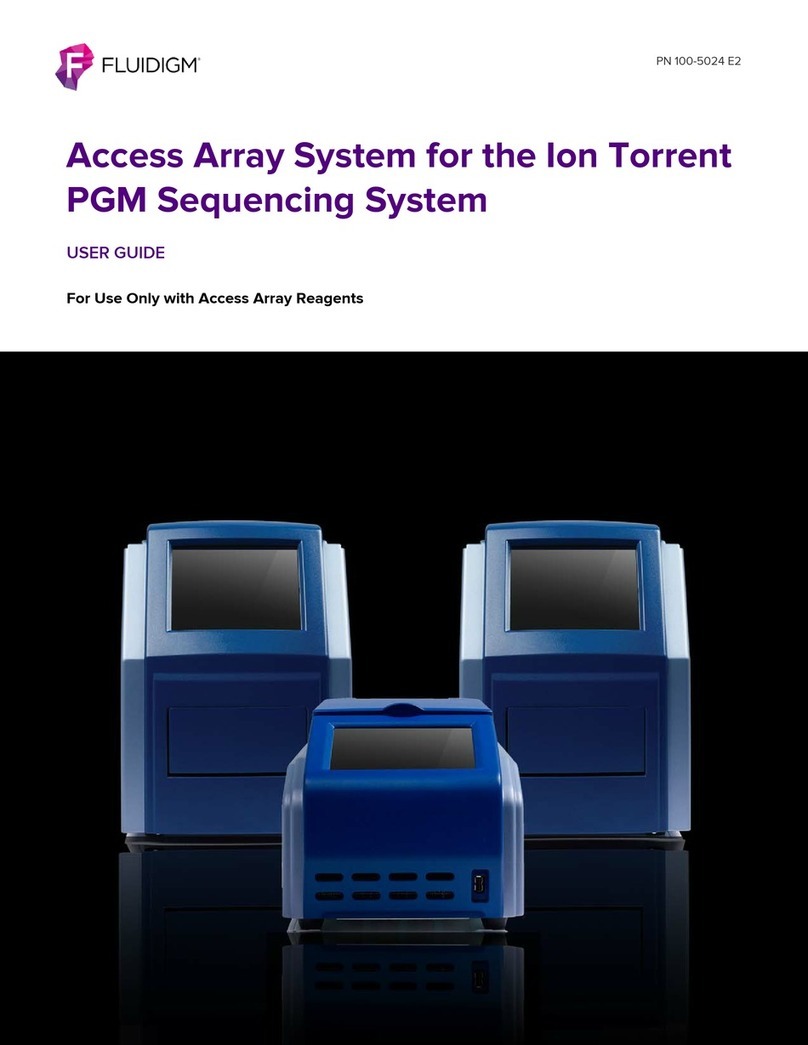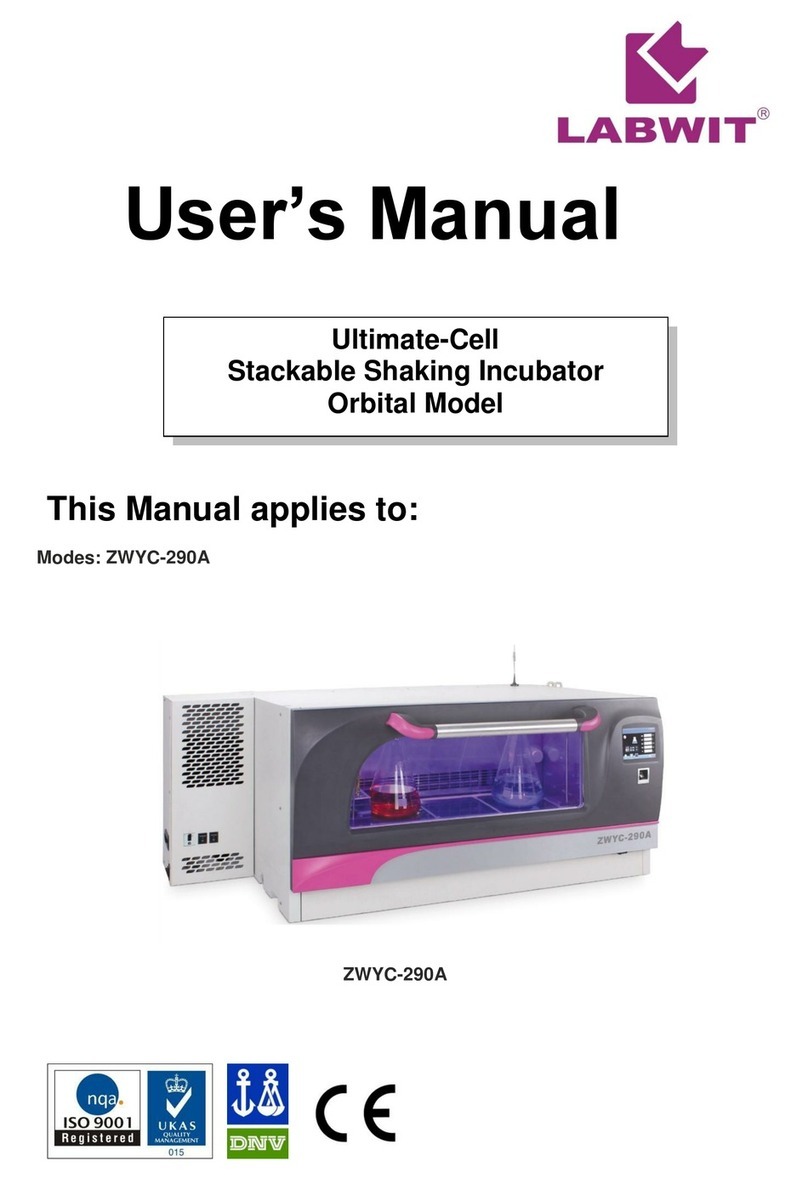Storz NPU 408000 01 User manual

Navigation Panel Unit NPU 408000 01
Instruction
Manual

Thank you for your expression of confidence in the KARLSTORZ brand name. Like all of our
other products, this product is the result of years of experience and great care in manufacture.
You and your organization have decided in favor of a modern, high-quality item of equipment
from KARLSTORZ.
This instruction manual is intended to serve as an aid in the proper operation and cleaning of the
Navigation Panel Unit (NPU). All essential details of the equipment and all actions required on
your part are clearly presented and explained. We thus ask that you read this manual carefully
before proceeding to work with the instrument. Keep this manual available for ready reference.
KARLSTORZ is constantly working on the further development of all products. Please appreciate
that changes to the scope of supply in form, equipment and technology are possible for this
reason. Therefore, no claims may be deduced from the information, figures and descriptions in
this manual.
CAUTION: ederal (USA) law restricts this device to sale by or on the order of a physician.
Important information
for users of KARL STORZ
instruments
2

Illustrate Description
3
s
a
o
i
w
e
r
y
u
t
q
;
2!
2)
2@
h
g
f
d
j
k
l

qHandle screw for securing the jointed arm
wCamera
eCamera lenses
rNPU panel
tDocking adaptor
yButton for opening the CD drawer
uCD/DVD drive
iStand bar with cable channel
oStand base
aPower switch for turning the electronics box on and off
sElectronics box
dVGA connection for external monitor
fConnection for camera cable
gConnection for data and power supply cable (to docking adaptor)
hConnection for imaging cable (to docking adaptor)
jConnection for imaging cable (to electronics box)
kConnection for data and power supply cable (to electronics box)
lConnection for camera cable
;Headband with plastic holder for patient tracker
2) Reference ball
2! Patient tracker
2@ Navigation probe
Controls, Displays, Connectors
An Their Uses
4

Important Information 㛬㛬㛬㛬㛬㛬㛬㛬㛬㛬㛬㛬㛬㛬㛬㛬㛬㛬㛬㛬㛬㛬㛬㛬㛬㛬㛬㛬㛬㛬㛬㛬㛬㛬㛬㛬㛬㛬㛬㛬㛬㛬㛬㛬㛬㛬㛬㛬㛬㛬㛬㛬㛬㛬㛬㛬㛬㛬㛬㛬㛬㛬㛬㛬㛬㛬㛬㛬㛬㛬㛬㛬㛬㛬㛬㛬㛬㛬㛬㛬㛬㛬㛬㛬㛬㛬㛬㛬㛬㛬㛬㛬㛬㛬㛬㛬㛬㛬㛬㛬㛬㛬㛬㛬㛬㛬㛬㛬㛬㛬㛬㛬㛬㛬㛬㛬㛬㛬㛬㛬㛬㛬㛬㛬㛬㛬㛬㛬 2
Illustrated Description㛬㛬㛬㛬㛬㛬㛬㛬㛬㛬㛬㛬㛬㛬㛬㛬㛬㛬㛬㛬㛬㛬㛬㛬㛬㛬㛬㛬㛬㛬㛬㛬㛬㛬㛬㛬㛬㛬㛬㛬㛬㛬㛬㛬㛬㛬㛬㛬㛬㛬㛬㛬㛬㛬㛬㛬㛬㛬㛬㛬㛬㛬㛬㛬㛬㛬㛬㛬㛬㛬㛬㛬㛬㛬㛬㛬㛬㛬㛬㛬㛬㛬㛬㛬㛬㛬㛬㛬㛬㛬㛬㛬㛬㛬㛬㛬㛬㛬㛬㛬㛬㛬㛬㛬㛬㛬㛬㛬㛬㛬㛬㛬㛬㛬㛬㛬㛬㛬㛬㛬㛬㛬㛬㛬㛬㛬㛬㛬㛬3
Controls, Displays, Connectors and Their Uses㛬㛬㛬㛬㛬㛬㛬㛬㛬㛬㛬㛬㛬㛬㛬㛬㛬㛬㛬㛬㛬㛬㛬㛬㛬㛬㛬㛬㛬㛬㛬㛬㛬㛬㛬㛬㛬㛬㛬㛬㛬㛬㛬㛬㛬㛬㛬㛬㛬㛬㛬㛬㛬㛬㛬㛬㛬㛬㛬㛬㛬㛬㛬㛬㛬㛬㛬㛬㛬㛬㛬㛬㛬㛬㛬㛬㛬㛬㛬㛬㛬㛬㛬㛬㛬㛬4
Intended use㛬㛬㛬㛬㛬㛬㛬㛬㛬㛬㛬㛬㛬㛬㛬㛬㛬㛬㛬㛬㛬㛬㛬㛬㛬㛬㛬㛬㛬㛬㛬㛬㛬㛬㛬㛬㛬㛬㛬㛬㛬㛬㛬㛬㛬㛬㛬㛬㛬㛬㛬㛬㛬㛬㛬㛬㛬㛬㛬㛬㛬㛬㛬㛬㛬㛬㛬㛬㛬㛬㛬㛬㛬㛬㛬㛬㛬㛬㛬㛬㛬㛬㛬㛬㛬㛬㛬㛬㛬㛬㛬㛬㛬㛬㛬㛬㛬㛬㛬㛬㛬㛬㛬㛬㛬㛬㛬㛬㛬㛬㛬㛬㛬㛬㛬㛬㛬㛬㛬㛬㛬㛬㛬㛬㛬㛬㛬㛬㛬㛬㛬㛬㛬㛬㛬㛬㛬㛬㛬㛬㛬㛬㛬㛬8
Contraindications㛬㛬㛬㛬㛬㛬㛬㛬㛬㛬㛬㛬㛬㛬㛬㛬㛬㛬㛬㛬㛬㛬㛬㛬㛬㛬㛬㛬㛬㛬㛬㛬㛬㛬㛬㛬㛬㛬㛬㛬㛬㛬㛬㛬㛬㛬㛬㛬㛬㛬㛬㛬㛬㛬㛬㛬㛬㛬㛬㛬㛬㛬㛬㛬㛬㛬㛬㛬㛬㛬㛬㛬㛬㛬㛬㛬㛬㛬㛬㛬㛬㛬㛬㛬㛬㛬㛬㛬㛬㛬㛬㛬㛬㛬㛬㛬㛬㛬㛬㛬㛬㛬㛬㛬㛬㛬㛬㛬㛬㛬㛬㛬㛬㛬㛬㛬㛬㛬㛬㛬㛬㛬㛬㛬㛬㛬㛬㛬㛬㛬㛬㛬㛬㛬㛬㛬㛬8
User qualification㛬㛬㛬㛬㛬㛬㛬㛬㛬㛬㛬㛬㛬㛬㛬㛬㛬㛬㛬㛬㛬㛬㛬㛬㛬㛬㛬㛬㛬㛬㛬㛬㛬㛬㛬㛬㛬㛬㛬㛬㛬㛬㛬㛬㛬㛬㛬㛬㛬㛬㛬㛬㛬㛬㛬㛬㛬㛬㛬㛬㛬㛬㛬㛬㛬㛬㛬㛬㛬㛬㛬㛬㛬㛬㛬㛬㛬㛬㛬㛬㛬㛬㛬㛬㛬㛬㛬㛬㛬㛬㛬㛬㛬㛬㛬㛬㛬㛬㛬㛬㛬㛬㛬㛬㛬㛬㛬㛬㛬㛬㛬㛬㛬㛬㛬㛬㛬㛬㛬㛬㛬㛬㛬㛬㛬㛬㛬㛬㛬㛬㛬㛬㛬㛬㛬㛬㛬9
Safety precautions at the site of installation 㛬㛬㛬㛬㛬㛬㛬㛬㛬㛬㛬㛬㛬㛬㛬㛬㛬㛬㛬㛬㛬㛬㛬㛬㛬㛬㛬㛬㛬㛬㛬㛬㛬㛬㛬㛬㛬㛬㛬㛬㛬㛬㛬㛬㛬㛬㛬㛬㛬㛬㛬㛬㛬㛬㛬㛬㛬㛬㛬㛬㛬㛬㛬㛬㛬㛬㛬㛬㛬㛬㛬㛬㛬㛬㛬㛬㛬㛬㛬㛬㛬㛬㛬㛬㛬㛬㛬㛬㛬㛬㛬㛬9
Safety precautions when operating the unit 㛬㛬㛬㛬㛬㛬㛬㛬㛬㛬㛬㛬㛬㛬㛬㛬㛬㛬㛬㛬㛬㛬㛬㛬㛬㛬㛬㛬㛬㛬㛬㛬㛬㛬㛬㛬㛬㛬㛬㛬㛬㛬㛬㛬㛬㛬㛬㛬㛬㛬㛬㛬㛬㛬㛬㛬㛬㛬㛬㛬㛬㛬㛬㛬㛬㛬㛬㛬㛬㛬㛬㛬㛬㛬㛬㛬㛬㛬㛬㛬㛬㛬㛬㛬㛬㛬㛬㛬㛬㛬㛬㛬9
Symbols and hazard information㛬㛬㛬㛬㛬㛬㛬㛬㛬㛬㛬㛬㛬㛬㛬㛬㛬㛬㛬㛬㛬㛬㛬㛬㛬㛬㛬㛬㛬㛬㛬㛬㛬㛬㛬㛬㛬㛬㛬㛬㛬㛬㛬㛬㛬㛬㛬㛬㛬㛬㛬㛬㛬㛬㛬㛬㛬㛬㛬㛬㛬㛬㛬㛬㛬㛬㛬㛬㛬㛬㛬㛬㛬㛬㛬㛬㛬㛬㛬㛬㛬㛬㛬㛬㛬㛬㛬㛬㛬㛬㛬㛬㛬㛬㛬㛬㛬㛬㛬㛬㛬㛬㛬㛬㛬㛬㛬㛬㛬10
Unpacking 㛬㛬㛬㛬㛬㛬㛬㛬㛬㛬㛬㛬㛬㛬㛬㛬㛬㛬㛬㛬㛬㛬㛬㛬㛬㛬㛬㛬㛬㛬㛬㛬㛬㛬㛬㛬㛬㛬㛬㛬㛬㛬㛬㛬㛬㛬㛬㛬㛬㛬㛬㛬㛬㛬㛬㛬㛬㛬㛬㛬㛬㛬㛬㛬㛬㛬㛬㛬㛬㛬㛬㛬㛬㛬㛬㛬㛬㛬㛬㛬㛬㛬㛬㛬㛬㛬㛬㛬㛬㛬㛬㛬㛬㛬㛬㛬㛬㛬㛬㛬㛬㛬㛬㛬㛬㛬㛬㛬㛬㛬㛬㛬㛬㛬㛬㛬㛬㛬㛬㛬㛬㛬㛬㛬㛬㛬㛬㛬㛬㛬㛬㛬㛬㛬㛬㛬㛬㛬㛬㛬㛬㛬㛬㛬13
Basic equipment 㛬㛬㛬㛬㛬㛬㛬㛬㛬㛬㛬㛬㛬㛬㛬㛬㛬㛬㛬㛬㛬㛬㛬㛬㛬㛬㛬㛬㛬㛬㛬㛬㛬㛬㛬㛬㛬㛬㛬㛬㛬㛬㛬㛬㛬㛬㛬㛬㛬㛬㛬㛬㛬㛬㛬㛬㛬㛬㛬㛬㛬㛬㛬㛬㛬㛬㛬㛬㛬㛬㛬㛬㛬㛬㛬㛬㛬㛬㛬㛬㛬㛬㛬㛬㛬㛬㛬㛬㛬㛬㛬㛬㛬㛬㛬㛬㛬㛬㛬㛬㛬㛬㛬㛬㛬㛬㛬㛬㛬㛬㛬㛬㛬㛬㛬㛬㛬㛬㛬㛬㛬㛬㛬㛬㛬㛬㛬㛬㛬㛬㛬㛬㛬㛬㛬13
Visualizing radiological image data with a CT㛬㛬㛬㛬㛬㛬㛬㛬㛬㛬㛬㛬㛬㛬㛬㛬㛬㛬㛬㛬㛬㛬㛬㛬㛬㛬㛬㛬㛬㛬㛬㛬㛬㛬㛬㛬㛬㛬㛬㛬㛬㛬㛬㛬㛬㛬㛬㛬㛬㛬㛬㛬㛬㛬㛬㛬㛬㛬㛬㛬㛬㛬㛬㛬㛬㛬㛬㛬㛬㛬㛬㛬㛬㛬㛬㛬㛬㛬㛬㛬㛬㛬㛬㛬㛬㛬㛬14
Visualizing radiological image data with an MRI 㛬㛬㛬㛬㛬㛬㛬㛬㛬㛬㛬㛬㛬㛬㛬㛬㛬㛬㛬㛬㛬㛬㛬㛬㛬㛬㛬㛬㛬㛬㛬㛬㛬㛬㛬㛬㛬㛬㛬㛬㛬㛬㛬㛬㛬㛬㛬㛬㛬㛬㛬㛬㛬㛬㛬㛬㛬㛬㛬㛬㛬㛬㛬㛬㛬㛬㛬㛬㛬㛬㛬㛬㛬㛬㛬㛬㛬㛬㛬㛬㛬㛬14
Installation and operating instructions㛬㛬㛬㛬㛬㛬㛬㛬㛬㛬㛬㛬㛬㛬㛬㛬㛬㛬㛬㛬㛬㛬㛬㛬㛬㛬㛬㛬㛬㛬㛬㛬㛬㛬㛬㛬㛬㛬㛬㛬㛬㛬㛬㛬㛬㛬㛬㛬㛬㛬㛬㛬㛬㛬㛬㛬㛬㛬㛬㛬㛬㛬㛬㛬㛬㛬㛬㛬㛬㛬㛬㛬㛬㛬㛬㛬㛬㛬㛬㛬㛬㛬㛬㛬㛬㛬㛬㛬㛬㛬㛬㛬㛬㛬㛬㛬㛬㛬㛬㛬16
Securing the electronics box to the stand 㛬㛬㛬㛬㛬㛬㛬㛬㛬㛬㛬㛬㛬㛬㛬㛬㛬㛬㛬㛬㛬㛬㛬㛬㛬㛬㛬㛬㛬㛬㛬㛬㛬㛬㛬㛬㛬㛬㛬㛬㛬㛬㛬㛬㛬㛬㛬㛬㛬㛬㛬㛬㛬㛬㛬㛬㛬㛬㛬㛬㛬㛬㛬㛬㛬㛬㛬㛬㛬㛬㛬㛬㛬㛬㛬㛬㛬㛬㛬㛬㛬㛬㛬㛬㛬㛬㛬㛬㛬16
Securing the docking adaptor to the stand 㛬㛬㛬㛬㛬㛬㛬㛬㛬㛬㛬㛬㛬㛬㛬㛬㛬㛬㛬㛬㛬㛬㛬㛬㛬㛬㛬㛬㛬㛬㛬㛬㛬㛬㛬㛬㛬㛬㛬㛬㛬㛬㛬㛬㛬㛬㛬㛬㛬㛬㛬㛬㛬㛬㛬㛬㛬㛬㛬㛬㛬㛬㛬㛬㛬㛬㛬㛬㛬㛬㛬㛬㛬㛬㛬㛬㛬㛬㛬㛬㛬㛬㛬㛬㛬㛬㛬16
Securing the camera to the stand㛬㛬㛬㛬㛬㛬㛬㛬㛬㛬㛬㛬㛬㛬㛬㛬㛬㛬㛬㛬㛬㛬㛬㛬㛬㛬㛬㛬㛬㛬㛬㛬㛬㛬㛬㛬㛬㛬㛬㛬㛬㛬㛬㛬㛬㛬㛬㛬㛬㛬㛬㛬㛬㛬㛬㛬㛬㛬㛬㛬㛬㛬㛬㛬㛬㛬㛬㛬㛬㛬㛬㛬㛬㛬㛬㛬㛬㛬㛬㛬㛬㛬㛬㛬㛬㛬㛬㛬㛬㛬㛬㛬㛬㛬㛬㛬㛬㛬㛬㛬㛬㛬㛬17
Connecting the navigation camera 㛬㛬㛬㛬㛬㛬㛬㛬㛬㛬㛬㛬㛬㛬㛬㛬㛬㛬㛬㛬㛬㛬㛬㛬㛬㛬㛬㛬㛬㛬㛬㛬㛬㛬㛬㛬㛬㛬㛬㛬㛬㛬㛬㛬㛬㛬㛬㛬㛬㛬㛬㛬㛬㛬㛬㛬㛬㛬㛬㛬㛬㛬㛬㛬㛬㛬㛬㛬㛬㛬㛬㛬㛬㛬㛬㛬㛬㛬㛬㛬㛬㛬㛬㛬㛬㛬㛬㛬㛬㛬㛬㛬㛬㛬㛬㛬㛬㛬㛬㛬㛬17
Routing the cable 㛬㛬㛬㛬㛬㛬㛬㛬㛬㛬㛬㛬㛬㛬㛬㛬㛬㛬㛬㛬㛬㛬㛬㛬㛬㛬㛬㛬㛬㛬㛬㛬㛬㛬㛬㛬㛬㛬㛬㛬㛬㛬㛬㛬㛬㛬㛬㛬㛬㛬㛬㛬㛬㛬㛬㛬㛬㛬㛬㛬㛬㛬㛬㛬㛬㛬㛬㛬㛬㛬㛬㛬㛬㛬㛬㛬㛬㛬㛬㛬㛬㛬㛬㛬㛬㛬㛬㛬㛬㛬㛬㛬㛬㛬㛬㛬㛬㛬㛬㛬㛬㛬㛬㛬㛬㛬㛬㛬㛬㛬㛬㛬㛬㛬㛬㛬㛬㛬㛬㛬㛬㛬㛬㛬㛬㛬㛬㛬㛬㛬14
Locking the KARL STORZ NPU panel on the docking adaptor 㛬㛬㛬㛬㛬㛬㛬㛬㛬㛬㛬㛬㛬㛬㛬㛬㛬㛬㛬㛬㛬㛬㛬㛬㛬㛬㛬㛬㛬㛬㛬㛬㛬㛬㛬㛬㛬㛬㛬㛬㛬㛬㛬㛬㛬㛬㛬㛬㛬㛬㛬㛬㛬㛬18
Removing the NPU panel on the docking adaptor 㛬㛬㛬㛬㛬㛬㛬㛬㛬㛬㛬㛬㛬㛬㛬㛬㛬㛬㛬㛬㛬㛬㛬㛬㛬㛬㛬㛬㛬㛬㛬㛬㛬㛬㛬㛬㛬㛬㛬㛬㛬㛬㛬㛬㛬㛬㛬㛬㛬㛬㛬㛬㛬㛬㛬㛬㛬㛬㛬㛬㛬㛬㛬㛬㛬㛬㛬㛬㛬㛬㛬㛬㛬㛬㛬18
Routing the cable of the KARL STORZ NPU panel to the electronics box㛬㛬㛬㛬㛬㛬㛬㛬㛬㛬㛬㛬㛬㛬㛬㛬㛬㛬㛬㛬㛬㛬㛬㛬㛬㛬㛬㛬㛬㛬㛬㛬㛬㛬㛬㛬19
Connecting the cable to the docking adaptor㛬㛬㛬㛬㛬㛬㛬㛬㛬㛬㛬㛬㛬㛬㛬㛬㛬㛬㛬㛬㛬㛬㛬㛬㛬㛬㛬㛬㛬㛬㛬㛬㛬㛬㛬㛬㛬㛬㛬㛬㛬㛬㛬㛬㛬㛬㛬㛬㛬㛬㛬㛬㛬㛬㛬㛬㛬㛬㛬㛬㛬㛬㛬㛬㛬㛬㛬㛬㛬㛬㛬㛬㛬㛬㛬㛬㛬㛬㛬㛬㛬㛬㛬19
Connecting the cable on the electronics box㛬㛬㛬㛬㛬㛬㛬㛬㛬㛬㛬㛬㛬㛬㛬㛬㛬㛬㛬㛬㛬㛬㛬㛬㛬㛬㛬㛬㛬㛬㛬㛬㛬㛬㛬㛬㛬㛬㛬㛬㛬㛬㛬㛬㛬㛬㛬㛬㛬㛬㛬㛬㛬㛬㛬㛬㛬㛬㛬㛬㛬㛬㛬㛬㛬㛬㛬㛬㛬㛬㛬㛬㛬㛬㛬㛬㛬㛬㛬㛬㛬㛬㛬㛬20
Moving the NPU system to the place of use 㛬㛬㛬㛬㛬㛬㛬㛬㛬㛬㛬㛬㛬㛬㛬㛬㛬㛬㛬㛬㛬㛬㛬㛬㛬㛬㛬㛬㛬㛬㛬㛬㛬㛬㛬㛬㛬㛬㛬㛬㛬㛬㛬㛬㛬㛬㛬㛬㛬㛬㛬㛬㛬㛬㛬㛬㛬㛬㛬㛬㛬㛬㛬㛬㛬㛬㛬㛬㛬㛬㛬㛬㛬㛬㛬㛬㛬㛬㛬㛬㛬㛬㛬㛬㛬20
Power supply 㛬㛬㛬㛬㛬㛬㛬㛬㛬㛬㛬㛬㛬㛬㛬㛬㛬㛬㛬㛬㛬㛬㛬㛬㛬㛬㛬㛬㛬㛬㛬㛬㛬㛬㛬㛬㛬㛬㛬㛬㛬㛬㛬㛬㛬㛬㛬㛬㛬㛬㛬㛬㛬㛬㛬㛬㛬㛬㛬㛬㛬㛬㛬㛬㛬㛬㛬㛬㛬㛬㛬㛬㛬㛬㛬㛬㛬㛬㛬㛬㛬㛬㛬㛬㛬㛬㛬㛬㛬㛬㛬㛬㛬㛬㛬㛬㛬㛬㛬㛬㛬㛬㛬㛬㛬㛬㛬㛬㛬㛬㛬㛬㛬㛬㛬㛬㛬㛬㛬㛬㛬㛬㛬㛬㛬㛬㛬㛬㛬㛬㛬㛬㛬㛬㛬㛬㛬21
Carrying out planning with the NPU system 㛬㛬㛬㛬㛬㛬㛬㛬㛬㛬㛬㛬㛬㛬㛬㛬㛬㛬㛬㛬㛬㛬㛬㛬㛬㛬㛬㛬㛬㛬㛬㛬㛬㛬㛬㛬㛬㛬㛬㛬㛬㛬㛬㛬㛬㛬㛬㛬㛬㛬㛬㛬㛬㛬㛬㛬㛬㛬㛬㛬㛬㛬㛬㛬㛬㛬㛬㛬㛬㛬22
Switching the KARL STORZ NPU panel on 㛬㛬㛬㛬㛬㛬㛬㛬㛬㛬㛬㛬㛬㛬㛬㛬㛬㛬㛬㛬㛬㛬㛬㛬㛬㛬㛬㛬㛬㛬㛬㛬㛬㛬㛬㛬㛬㛬㛬㛬㛬㛬㛬㛬㛬㛬㛬㛬㛬㛬㛬㛬㛬㛬㛬㛬㛬㛬㛬㛬㛬㛬㛬㛬㛬㛬㛬㛬㛬㛬㛬㛬㛬㛬㛬㛬㛬㛬㛬㛬㛬㛬㛬㛬㛬㛬㛬22
Starting the planning software㛬㛬㛬㛬㛬㛬㛬㛬㛬㛬㛬㛬㛬㛬㛬㛬㛬㛬㛬㛬㛬㛬㛬㛬㛬㛬㛬㛬㛬㛬㛬㛬㛬㛬㛬㛬㛬㛬㛬㛬㛬㛬㛬㛬㛬㛬㛬㛬㛬㛬㛬㛬㛬㛬㛬㛬㛬㛬㛬㛬㛬㛬㛬㛬㛬㛬㛬㛬㛬㛬㛬㛬㛬㛬㛬㛬㛬㛬㛬㛬㛬㛬㛬㛬㛬22
Reading in patient data 㛬㛬㛬㛬㛬㛬㛬㛬㛬㛬㛬㛬㛬㛬㛬㛬㛬㛬㛬㛬㛬㛬㛬㛬㛬㛬㛬㛬㛬㛬㛬㛬㛬㛬㛬㛬㛬㛬㛬㛬㛬㛬㛬㛬㛬㛬㛬㛬㛬㛬㛬㛬㛬㛬㛬㛬㛬㛬㛬㛬㛬㛬㛬㛬㛬㛬㛬㛬㛬㛬㛬㛬㛬㛬㛬㛬㛬㛬㛬㛬㛬㛬㛬㛬㛬㛬㛬㛬㛬㛬㛬㛬㛬23
Inserting a data medium 㛬㛬㛬㛬㛬㛬㛬㛬㛬㛬㛬㛬㛬㛬㛬㛬㛬㛬㛬㛬㛬㛬㛬㛬㛬㛬㛬㛬㛬㛬㛬㛬㛬㛬㛬㛬㛬㛬㛬㛬㛬㛬㛬㛬㛬㛬㛬㛬㛬㛬㛬㛬㛬㛬㛬㛬㛬㛬㛬㛬㛬㛬㛬㛬㛬㛬㛬㛬㛬㛬㛬㛬㛬㛬㛬㛬㛬㛬㛬㛬㛬㛬㛬㛬㛬㛬㛬㛬㛬㛬㛬㛬23
Selecting the patient 㛬㛬㛬㛬㛬㛬㛬㛬㛬㛬㛬㛬㛬㛬㛬㛬㛬㛬㛬㛬㛬㛬㛬㛬㛬㛬㛬㛬㛬㛬㛬㛬㛬㛬㛬㛬㛬㛬㛬㛬㛬㛬㛬㛬㛬㛬㛬㛬㛬㛬㛬㛬㛬㛬㛬㛬㛬㛬㛬㛬㛬㛬㛬㛬㛬㛬㛬㛬㛬㛬㛬㛬㛬㛬㛬㛬㛬㛬㛬㛬㛬㛬㛬㛬㛬㛬㛬㛬㛬㛬㛬㛬㛬㛬㛬㛬㛬24
Contents
5

Positioning of landmarks for patient registration 㛬㛬㛬㛬㛬㛬㛬㛬㛬㛬㛬㛬㛬㛬㛬㛬㛬㛬㛬㛬㛬㛬㛬㛬㛬㛬㛬㛬㛬㛬㛬㛬㛬㛬㛬㛬㛬㛬㛬㛬㛬㛬㛬㛬㛬㛬㛬㛬㛬㛬㛬㛬㛬㛬㛬㛬㛬㛬㛬㛬㛬㛬㛬㛬25
General information on the positioning of landmarks 㛬㛬㛬㛬㛬㛬㛬㛬㛬㛬㛬㛬㛬㛬㛬㛬㛬㛬㛬㛬㛬㛬㛬㛬㛬㛬㛬㛬㛬㛬㛬㛬㛬㛬㛬㛬㛬㛬㛬㛬㛬㛬㛬㛬㛬㛬㛬㛬㛬㛬㛬㛬㛬㛬㛬25
Adding and moving landmarks in the 3D surface model 㛬㛬㛬㛬㛬㛬㛬㛬㛬㛬㛬㛬㛬㛬㛬㛬㛬㛬㛬㛬㛬㛬㛬㛬㛬㛬㛬㛬㛬㛬㛬㛬㛬㛬㛬㛬㛬㛬㛬㛬㛬㛬㛬㛬㛬㛬㛬㛬㛬㛬26
Adding and moving landmarks in the 2D CT sectional views 㛬㛬㛬㛬㛬㛬㛬㛬㛬㛬㛬㛬㛬㛬㛬㛬㛬㛬㛬㛬㛬㛬㛬㛬㛬㛬㛬㛬㛬㛬㛬㛬㛬㛬㛬㛬㛬㛬㛬㛬㛬㛬㛬㛬27
Deleting the added and positioned landmarks 㛬㛬㛬㛬㛬㛬㛬㛬㛬㛬㛬㛬㛬㛬㛬㛬㛬㛬㛬㛬㛬㛬㛬㛬㛬㛬㛬㛬㛬㛬㛬㛬㛬㛬㛬㛬㛬㛬㛬㛬㛬㛬㛬㛬㛬㛬㛬㛬㛬㛬㛬㛬㛬㛬㛬㛬㛬㛬㛬㛬㛬㛬㛬28
Adapting the visualization of patient data㛬㛬㛬㛬㛬㛬㛬㛬㛬㛬㛬㛬㛬㛬㛬㛬㛬㛬㛬㛬㛬㛬㛬㛬㛬㛬㛬㛬㛬㛬㛬㛬㛬㛬㛬㛬㛬㛬㛬㛬㛬㛬㛬㛬㛬㛬㛬㛬㛬㛬㛬㛬㛬㛬㛬㛬㛬㛬㛬㛬㛬㛬㛬㛬㛬㛬㛬㛬㛬㛬㛬㛬㛬28
Selecting the content of the window㛬㛬㛬㛬㛬㛬㛬㛬㛬㛬㛬㛬㛬㛬㛬㛬㛬㛬㛬㛬㛬㛬㛬㛬㛬㛬㛬㛬㛬㛬㛬㛬㛬㛬㛬㛬㛬㛬㛬㛬㛬㛬㛬㛬㛬㛬㛬㛬㛬㛬㛬㛬㛬㛬㛬㛬㛬㛬㛬㛬㛬㛬㛬㛬㛬㛬㛬㛬㛬㛬㛬㛬㛬㛬㛬㛬㛬28
Enlarging, reducing and moving the slice views 㛬㛬㛬㛬㛬㛬㛬㛬㛬㛬㛬㛬㛬㛬㛬㛬㛬㛬㛬㛬㛬㛬㛬㛬㛬㛬㛬㛬㛬㛬㛬㛬㛬㛬㛬㛬㛬㛬㛬㛬㛬㛬㛬㛬㛬㛬㛬㛬㛬㛬㛬㛬㛬㛬㛬㛬㛬㛬㛬㛬㛬30
Softening the slice view 㛬㛬㛬㛬㛬㛬㛬㛬㛬㛬㛬㛬㛬㛬㛬㛬㛬㛬㛬㛬㛬㛬㛬㛬㛬㛬㛬㛬㛬㛬㛬㛬㛬㛬㛬㛬㛬㛬㛬㛬㛬㛬㛬㛬㛬㛬㛬㛬㛬㛬㛬㛬㛬㛬㛬㛬㛬㛬㛬㛬㛬㛬㛬㛬㛬㛬㛬㛬㛬㛬㛬㛬㛬㛬㛬㛬㛬㛬㛬㛬㛬㛬㛬㛬㛬㛬㛬㛬㛬㛬㛬㛬㛬31
Selecting the slice displayed 㛬㛬㛬㛬㛬㛬㛬㛬㛬㛬㛬㛬㛬㛬㛬㛬㛬㛬㛬㛬㛬㛬㛬㛬㛬㛬㛬㛬㛬㛬㛬㛬㛬㛬㛬㛬㛬㛬㛬㛬㛬㛬㛬㛬㛬㛬㛬㛬㛬㛬㛬㛬㛬㛬㛬㛬㛬㛬㛬㛬㛬㛬㛬㛬㛬㛬㛬㛬㛬㛬㛬㛬㛬㛬㛬㛬㛬㛬㛬㛬㛬㛬㛬㛬㛬㛬31
Setting the contrast/brightness㛬㛬㛬㛬㛬㛬㛬㛬㛬㛬㛬㛬㛬㛬㛬㛬㛬㛬㛬㛬㛬㛬㛬㛬㛬㛬㛬㛬㛬㛬㛬㛬㛬㛬㛬㛬㛬㛬㛬㛬㛬㛬㛬㛬㛬㛬㛬㛬㛬㛬㛬㛬㛬㛬㛬㛬㛬㛬㛬㛬㛬㛬㛬㛬㛬㛬㛬㛬㛬㛬㛬㛬㛬㛬㛬㛬㛬㛬㛬㛬㛬㛬㛬㛬32
Using the length measurement tool㛬㛬㛬㛬㛬㛬㛬㛬㛬㛬㛬㛬㛬㛬㛬㛬㛬㛬㛬㛬㛬㛬㛬㛬㛬㛬㛬㛬㛬㛬㛬㛬㛬㛬㛬㛬㛬㛬㛬㛬㛬㛬㛬㛬㛬㛬㛬㛬㛬㛬㛬㛬㛬㛬㛬㛬㛬㛬㛬㛬㛬㛬㛬㛬㛬㛬㛬㛬㛬㛬㛬㛬㛬㛬㛬㛬㛬㛬32
Enlarging, reducing, rotating and moving the 3D visualization 㛬㛬㛬㛬㛬㛬㛬㛬㛬㛬㛬㛬㛬㛬㛬㛬㛬㛬㛬㛬㛬㛬㛬㛬㛬㛬㛬㛬㛬㛬㛬㛬㛬㛬㛬㛬㛬㛬㛬㛬㛬㛬33
Saving and ending the planning 㛬㛬㛬㛬㛬㛬㛬㛬㛬㛬㛬㛬㛬㛬㛬㛬㛬㛬㛬㛬㛬㛬㛬㛬㛬㛬㛬㛬㛬㛬㛬㛬㛬㛬㛬㛬㛬㛬㛬㛬㛬㛬㛬㛬㛬㛬㛬㛬㛬㛬㛬㛬㛬㛬㛬㛬㛬㛬㛬㛬㛬㛬㛬㛬㛬㛬㛬㛬㛬㛬㛬㛬㛬㛬㛬㛬㛬㛬㛬㛬㛬34
Starting the software 㛬㛬㛬㛬㛬㛬㛬㛬㛬㛬㛬㛬㛬㛬㛬㛬㛬㛬㛬㛬㛬㛬㛬㛬㛬㛬㛬㛬㛬㛬㛬㛬㛬㛬㛬㛬㛬㛬㛬㛬㛬㛬㛬㛬㛬㛬㛬㛬㛬㛬㛬㛬㛬㛬㛬㛬㛬㛬㛬㛬㛬㛬㛬㛬㛬㛬㛬㛬㛬㛬㛬㛬㛬㛬㛬㛬㛬㛬㛬㛬㛬㛬㛬㛬㛬㛬㛬㛬㛬㛬㛬㛬㛬㛬㛬㛬㛬㛬㛬㛬35
Loading the planning data㛬㛬㛬㛬㛬㛬㛬㛬㛬㛬㛬㛬㛬㛬㛬㛬㛬㛬㛬㛬㛬㛬㛬㛬㛬㛬㛬㛬㛬㛬㛬㛬㛬㛬㛬㛬㛬㛬㛬㛬㛬㛬㛬㛬㛬㛬㛬㛬㛬㛬㛬㛬㛬㛬㛬㛬㛬㛬㛬㛬㛬㛬㛬㛬㛬㛬㛬㛬㛬㛬㛬㛬㛬㛬㛬㛬㛬㛬㛬㛬㛬㛬㛬㛬㛬㛬㛬㛬㛬㛬㛬㛬㛬㛬㛬㛬㛬㛬㛬㛬㛬㛬㛬㛬㛬㛬㛬㛬㛬㛬㛬㛬㛬㛬㛬㛬㛬㛬㛬35
Starting the navigation㛬㛬㛬㛬㛬㛬㛬㛬㛬㛬㛬㛬㛬㛬㛬㛬㛬㛬㛬㛬㛬㛬㛬㛬㛬㛬㛬㛬㛬㛬㛬㛬㛬㛬㛬㛬㛬㛬㛬㛬㛬㛬㛬㛬㛬㛬㛬㛬㛬㛬㛬㛬㛬㛬㛬㛬㛬㛬㛬㛬㛬㛬㛬㛬㛬㛬㛬㛬㛬㛬㛬㛬㛬㛬㛬㛬㛬㛬㛬㛬㛬㛬㛬㛬㛬㛬㛬㛬㛬㛬㛬㛬㛬㛬㛬㛬㛬㛬㛬㛬㛬㛬㛬㛬㛬㛬㛬㛬㛬㛬㛬㛬㛬㛬㛬㛬㛬㛬㛬㛬㛬㛬㛬㛬㛬㛬36
Preparing the patient and the instruments 㛬㛬㛬㛬㛬㛬㛬㛬㛬㛬㛬㛬㛬㛬㛬㛬㛬㛬㛬㛬㛬㛬㛬㛬㛬㛬㛬㛬㛬㛬㛬㛬㛬㛬㛬㛬㛬㛬㛬㛬㛬㛬㛬㛬㛬㛬㛬㛬㛬㛬㛬㛬㛬㛬㛬㛬㛬㛬㛬㛬㛬㛬㛬㛬㛬㛬㛬㛬㛬㛬㛬37
Using sterile drapes to cover the KARL STORZ NPU㛬㛬㛬㛬㛬㛬㛬㛬㛬㛬㛬㛬㛬㛬㛬㛬㛬㛬㛬㛬㛬㛬㛬㛬㛬㛬㛬㛬㛬㛬㛬㛬㛬㛬㛬㛬㛬㛬㛬㛬㛬㛬㛬㛬㛬㛬㛬㛬㛬㛬㛬㛬㛬㛬㛬37
Preparing the probe㛬㛬㛬㛬㛬㛬㛬㛬㛬㛬㛬㛬㛬㛬㛬㛬㛬㛬㛬㛬㛬㛬㛬㛬㛬㛬㛬㛬㛬㛬㛬㛬㛬㛬㛬㛬㛬㛬㛬㛬㛬㛬㛬㛬㛬㛬㛬㛬㛬㛬㛬㛬㛬㛬㛬㛬㛬㛬㛬㛬㛬㛬㛬㛬㛬㛬㛬㛬㛬㛬㛬㛬㛬㛬㛬㛬㛬㛬㛬㛬㛬㛬㛬㛬㛬㛬㛬㛬㛬㛬㛬㛬㛬㛬㛬㛬㛬㛬37
Preparing the patient tracker 㛬㛬㛬㛬㛬㛬㛬㛬㛬㛬㛬㛬㛬㛬㛬㛬㛬㛬㛬㛬㛬㛬㛬㛬㛬㛬㛬㛬㛬㛬㛬㛬㛬㛬㛬㛬㛬㛬㛬㛬㛬㛬㛬㛬㛬㛬㛬㛬㛬㛬㛬㛬㛬㛬㛬㛬㛬㛬㛬㛬㛬㛬㛬㛬㛬㛬㛬㛬㛬㛬㛬㛬㛬㛬㛬㛬㛬㛬㛬㛬㛬㛬㛬㛬㛬㛬37
Securing the patient tracker to the patient 㛬㛬㛬㛬㛬㛬㛬㛬㛬㛬㛬㛬㛬㛬㛬㛬㛬㛬㛬㛬㛬㛬㛬㛬㛬㛬㛬㛬㛬㛬㛬㛬㛬㛬㛬㛬㛬㛬㛬㛬㛬㛬㛬㛬㛬㛬㛬㛬㛬㛬㛬㛬㛬㛬㛬㛬㛬㛬㛬㛬㛬㛬㛬㛬㛬㛬㛬㛬㛬38
Preparing the operating pen and/or mouse 㛬㛬㛬㛬㛬㛬㛬㛬㛬㛬㛬㛬㛬㛬㛬㛬㛬㛬㛬㛬㛬㛬㛬㛬㛬㛬㛬㛬㛬㛬㛬㛬㛬㛬㛬㛬㛬㛬㛬㛬㛬㛬㛬㛬㛬㛬㛬㛬㛬㛬㛬㛬㛬㛬㛬㛬㛬㛬㛬㛬㛬㛬㛬㛬㛬㛬㛬38
Setting up the NPU system㛬㛬㛬㛬㛬㛬㛬㛬㛬㛬㛬㛬㛬㛬㛬㛬㛬㛬㛬㛬㛬㛬㛬㛬㛬㛬㛬㛬㛬㛬㛬㛬㛬㛬㛬㛬㛬㛬㛬㛬㛬㛬㛬㛬㛬㛬㛬㛬㛬㛬㛬㛬㛬㛬㛬㛬㛬㛬㛬㛬㛬㛬㛬㛬㛬㛬㛬㛬㛬㛬㛬㛬㛬㛬㛬㛬㛬㛬㛬㛬㛬㛬㛬㛬㛬㛬㛬㛬㛬39
Aligning the camera 㛬㛬㛬㛬㛬㛬㛬㛬㛬㛬㛬㛬㛬㛬㛬㛬㛬㛬㛬㛬㛬㛬㛬㛬㛬㛬㛬㛬㛬㛬㛬㛬㛬㛬㛬㛬㛬㛬㛬㛬㛬㛬㛬㛬㛬㛬㛬㛬㛬㛬㛬㛬㛬㛬㛬㛬㛬㛬㛬㛬㛬㛬㛬㛬㛬㛬㛬㛬㛬㛬㛬㛬㛬㛬㛬㛬㛬㛬㛬㛬㛬㛬㛬㛬㛬㛬㛬㛬㛬㛬㛬㛬㛬㛬㛬㛬㛬39
Probe and optional instrument registration 㛬㛬㛬㛬㛬㛬㛬㛬㛬㛬㛬㛬㛬㛬㛬㛬㛬㛬㛬㛬㛬㛬㛬㛬㛬㛬㛬㛬㛬㛬㛬㛬㛬㛬㛬㛬㛬㛬㛬㛬㛬㛬㛬㛬㛬㛬㛬㛬㛬㛬㛬㛬㛬㛬㛬㛬㛬㛬㛬㛬㛬㛬㛬㛬㛬㛬㛬㛬㛬㛬㛬40
Patient registration㛬㛬㛬㛬㛬㛬㛬㛬㛬㛬㛬㛬㛬㛬㛬㛬㛬㛬㛬㛬㛬㛬㛬㛬㛬㛬㛬㛬㛬㛬㛬㛬㛬㛬㛬㛬㛬㛬㛬㛬㛬㛬㛬㛬㛬㛬㛬㛬㛬㛬㛬㛬㛬㛬㛬㛬㛬㛬㛬㛬㛬㛬㛬㛬㛬㛬㛬㛬㛬㛬㛬㛬㛬㛬㛬㛬㛬㛬㛬㛬㛬㛬㛬㛬㛬㛬㛬㛬㛬㛬㛬㛬㛬㛬㛬㛬㛬㛬㛬㛬㛬㛬㛬41
General information㛬㛬㛬㛬㛬㛬㛬㛬㛬㛬㛬㛬㛬㛬㛬㛬㛬㛬㛬㛬㛬㛬㛬㛬㛬㛬㛬㛬㛬㛬㛬㛬㛬㛬㛬㛬㛬㛬㛬㛬㛬㛬㛬㛬㛬㛬㛬㛬㛬㛬㛬㛬㛬㛬㛬㛬㛬㛬㛬㛬㛬㛬㛬㛬㛬㛬㛬㛬㛬㛬㛬㛬㛬㛬㛬㛬㛬㛬㛬㛬㛬㛬㛬㛬㛬㛬㛬㛬㛬㛬㛬㛬㛬㛬㛬㛬㛬㛬㛬㛬㛬㛬41
Touching anatomical landmarks 㛬㛬㛬㛬㛬㛬㛬㛬㛬㛬㛬㛬㛬㛬㛬㛬㛬㛬㛬㛬㛬㛬㛬㛬㛬㛬㛬㛬㛬㛬㛬㛬㛬㛬㛬㛬㛬㛬㛬㛬㛬㛬㛬㛬㛬㛬㛬㛬㛬㛬㛬㛬㛬㛬㛬㛬㛬㛬㛬㛬㛬㛬㛬㛬㛬㛬㛬㛬㛬㛬㛬㛬㛬㛬㛬㛬㛬㛬㛬㛬㛬㛬41
Correcting the registration㛬㛬㛬㛬㛬㛬㛬㛬㛬㛬㛬㛬㛬㛬㛬㛬㛬㛬㛬㛬㛬㛬㛬㛬㛬㛬㛬㛬㛬㛬㛬㛬㛬㛬㛬㛬㛬㛬㛬㛬㛬㛬㛬㛬㛬㛬㛬㛬㛬㛬㛬㛬㛬㛬㛬㛬㛬㛬㛬㛬㛬㛬㛬㛬㛬㛬㛬㛬㛬㛬㛬㛬㛬㛬㛬㛬㛬㛬㛬㛬㛬㛬㛬㛬㛬㛬㛬㛬㛬㛬41
Checking and confirming the patient registration㛬㛬㛬㛬㛬㛬㛬㛬㛬㛬㛬㛬㛬㛬㛬㛬㛬㛬㛬㛬㛬㛬㛬㛬㛬㛬㛬㛬㛬㛬㛬㛬㛬㛬㛬㛬㛬㛬㛬㛬㛬㛬㛬㛬㛬㛬㛬㛬㛬㛬㛬㛬㛬㛬㛬㛬㛬㛬㛬㛬43
Deleting the patient registration㛬㛬㛬㛬㛬㛬㛬㛬㛬㛬㛬㛬㛬㛬㛬㛬㛬㛬㛬㛬㛬㛬㛬㛬㛬㛬㛬㛬㛬㛬㛬㛬㛬㛬㛬㛬㛬㛬㛬㛬㛬㛬㛬㛬㛬㛬㛬㛬㛬㛬㛬㛬㛬㛬㛬㛬㛬㛬㛬㛬㛬㛬㛬㛬㛬㛬㛬㛬㛬㛬㛬㛬㛬㛬㛬㛬㛬㛬㛬㛬㛬㛬㛬44
Visualizing successful patient registration 㛬㛬㛬㛬㛬㛬㛬㛬㛬㛬㛬㛬㛬㛬㛬㛬㛬㛬㛬㛬㛬㛬㛬㛬㛬㛬㛬㛬㛬㛬㛬㛬㛬㛬㛬㛬㛬㛬㛬㛬㛬㛬㛬㛬㛬㛬㛬㛬㛬㛬㛬㛬㛬㛬㛬㛬㛬㛬㛬㛬㛬㛬㛬㛬㛬㛬㛬㛬45
Contents
6

Using and positioning the probe 45
Visualizing the probe in the 2D and 3D views of the radiological image data 46
Creating a screenshot with a navigated instrument 47
Ending the navigation mode 47
Ending the program 47
Exporting and deleting the planning data 48
Exporting the planning data 48
Deleting the planning data 49
Cleaning, Disinfection, Sterilization and care 51
Water quality requirements51
Cleaning brushes 52
ENT Navigation system components and accessories54
Pre-cleaning preparation54
Manual cleaning instructions for instruments55
Steam sterilization58
Replacing the fuses on the electronics box 59
Technical data 60
List of compatible units and products61
Instruments 61
Input devices61
List of compatible imaging systems 62
Maintenance63
Maintenance and routine inspections 63
Standard compliance 63
Directive compliance63
Disposal 64
Cleaning agents and disinfectants64
Electromagnetic compatibility (EMC) information for KARL STORZ NPU S\system 65
Shipping 70
Return Policy 70
Repair Program71
Warranty Policy 71
Limitation of liability72
Software ownership and licensing 73
Contents
7
System
Using and positioning the probe 45
Visualizing the probe in the 2D and 3D views of the radiological image data 46
Creating a screenshot with a navigated instrument 47
Ending the navigation mode 47
Ending the program 47
Exporting and deleting the planning data 48
Exporting the planning data 48
Deleting the planning data 49
Cleaning, Disinfection, Sterilization and care 51
Water quality requirements51
Cleaning brushes 52
ENT Navigation system components and accessories54
Pre-cleaning preparation54
Manual cleaning instructions for instruments55
Steam sterilization58
Replacing the fuses on the electronics box 59
Technical data 60
List of compatible units and products61
Instruments 61
Input devices61
List of compatible imaging systems 62
Maintenance63
Maintenance and routine inspections 63
Standard compliance 63
Directive compliance63
Disposal 64
Cleaning agents and disinfectants64
Electromagnetic compatibility (EMC) information for KARL STORZ NPU S\system 65
Shipping 70
Return Policy 70
Repair Program71
Warranty Policy 71
Limitation of liability72
Software ownership and licensing 73
Contents
7

Intended use
The Navigation Panel Unit (NPU) System is an intraoperative image guided localization system that
links a freehand probe tracked by a passive marker sensor system to a virtual computer image
space on a patient's preoperative diagnostic image data set. The system is intended to be used as
a positioning aid for navigation in ENT surgery, including but not limited to endoscopic surgery.
The NPU is indicated for any medical condition in which the use of stereotactic surgery may be
appropriate and where a reference to a rigid anatomical structure can be identified relative to the
radiological imaging-based model of the anatomy. Surgery procedures include but are not limited
to the following: transphenoidal procedures, maxillary antrostomies, ethmoidectomies,
sphenoidectomies, sphenoid explorations, turbinate resections, frontal sinusotomies, intranasal
procedures, intranasal tumor resections, otologic surgery, and ENT skull base surgery.
Contraindications:
• The KARLSTORZ NPU system must never be used if there are clinical or medical reasons
which prevent this.
• The KARLSTORZ NPU system may only be used if the operation could also be performed in
the conventional manner.
• The KARLSTORZ NPU system must not be used on patients with Creutzfeldt-Jakob disease.
If the KARL STORZ NPU system is used on such patients it must be subsequently disposed of
in line with the applicable regulations. The unit is then immediately no longer approved for use.
• The KARLSTORZ NPU system should not be used by persons with dyschromatopsia (color
blindness), in particular users who have difficulty distinguishing between or are blind to red
and green hues.
The KARLSTORZ NPU system must only be used with accessories which KARLSTORZ has
approved as suitable for use with the unit. A list of permitted and compatible products is included
in the appendix of this instruction manual.
Unauthorized conversions or modifications to the unit are not allowed for safety reasons.
Additional equipment connected to medical electrical equipment must be able to prove their
compliance with the respective IEC or ISO standards (e.g., IEC 60950 for data processing
equipment). urthermore all configurations shall comply with the standard requirements for
medical systems (see IEC 60601-1-1 or Clause 16 of the 3rd Ed. of IEC 60601-1, respectively).
Anybody connecting additional equipment to medical electrical equipment is a system
configurator and is therefore responsible for the system’s compliance with the standard
requirements for systems. Please note that local laws take priority over the above-mentioned
standard requirements. If in doubt, please consult your local specialist dealer or the technical
service department.
Safety Instructions
8

(Standard/directive references:
• IEC 60601-1+A1+A2:1995: 6.8.2.c, 19.2.b, 19.2.c,
• IEC 60601-1:2005: 7.9.2.5, 8.1, 16.2.d,
• MDD 93/42/EEC: Annex I Clause 13.6.c)
User qualification
The user of the KARLSTORZ NPU system as well as the surgical nurses and other staff must
have received authorized training on the safe and effective use of the system from the
manufacturer and distributor in order to be allowed to use the KARLSTORZ NPU system on
patients. The requirements of such training may differ depending on the applicable statutory
regulations at the place of use. The operator of the KARLSTORZ NPU system must ensure that
the user is given adequate training on the KARLSTORZ NPU system in accordance with the
relevant local laws.
Safety precautions at the site of installation
The unit may only be used in medical rooms the installations of which conform to applicable
national regulations.
It is not intended for use in hazardous zones. This means, for example, that when using easily
combustible and explosive inhalation anesthetics or mixtures of these, the unit must not be
operated inside the demarcated hazard zone. Examples of such substances are: anesthetic ether
(diethyl ether, cyclopropane) as well as combustible, volatile skin cleansers and skin
disinfectants which may create an explosive atmosphere (e.g. detergent ether, petroleum ether).
The unit is fitted with a protective conductor system and must therefore only be operated in
rooms which comply with the standards and laws for the electrical safety of rooms designated for
medical use.
Safety precautions when operating the unit
All KARLSTORZ products are developed and produced in absolute compliance with the strictest
safety standards. Nevertheless, in order to protect human life, the medical system must be used
properly and maintained regularly. It is mandatory that the user of this system reads, observes
and adheres to all the hazard and safety information given in this instruction manual in order to
guarantee the safety of the patient and user. If it is suspected that the KARLSTORZ NPU system
or one of its components is faulty or incorrectly adjusted, THE KARLSTORZ NPU system MUST
NOT BE USED until the unit has been inspected and, if necessary, repaired. The use of parts of
or the complete KARLSTORZ NPU system with faulty or incorrectly adjusted components can
put the safety of the patient at risk. This can lead to serious or fatal injuries.
60˚
Safety Instructions
9

It is expected that the user of the KARLSTORZ NPU systems has read and understood all the
instructions for conduct in the event of an emergency before planning to use and while using the
KARLSTORZ NPU system on patients. The user will find information on obligatory routine
inspections and preventive inspection work in the chapter on ‘Maintenance’ in this instruction
manual. If the operator/user fails to meet these obligations, this will result in the loss of all or part
of any warranty rights.
Symbols and hazard information
Please read this manual and follow its instructions carefully. The words Warning, Caution and
Note convey special meanings. Wherever they are used in this manual, they should be carefully
reviewed to ensure the safe and effective operation of this product. To make the words Warning
and Caution stand out more clearly, they are accompanied by a pictogram.
WARNING: A Warning indicates that the personal safety of the patient or physician may be
involved. Disregarding a Warning could result in injury to the patient or physician.
CAUTION: A Caution indicates that particlar procedures or precautions must be followed to
avoid possible damage to the instrument.
NOTE: A Note indicates special information about operating the instrument or clarifies important
information.
WARNING: Before operating the unit, read through the operating instructions carefully and keep
them available for ready reference.
WARNING: The instruction manual must have been read in full and understood. In the event of
any doubts when reading through the instructions or using the KARLSTORZ NPU system, the
KARLSTORZ NPU system must not be used until these doubts have been clarified. Contact
KARLSTORZ in such events.
WARNING: The KARLSTORZ NPU system must never be operated without the latest instruction
manual which relates to the system version in use.
WARNING: Unauthorized intervention in the system can cause injury to persons or damage to
the KARLSTORZ NPU system and will result in the loss of all warranty rights and product liability.
WARNING: Do not use the KARLSTORZNPU system if you suffer from dyschromatopsia (color
blindness), in particular if you have difficulty distinguishing between or are blind to red and green
hues.
Safety Instructions
10

WARNING: Operation of the system with power supplies which do not meet the requirements
stipulated can result in fatal or serious injuries.
WARNING: The modem connection of the tablet PC must not be connected with a telephone
jack or similar under any circumstances.
WARNING: Never touch the lateral connector sockets of the tablet PC and the patient
simultaneously.
WARNING: In case of emergency, switch the KARLSTORZ NPU system off immediately and
pull it away from the patient and staff.
CAUTION: Absolutely no liquids whatsoever, e.g. water, cleaning agents and disinfectants,
must be allowed to enter into the interior of the KARLSTORZ NPU system.
CAUTION: The KARLSTORZ NPU system must only be used and operated with accessories,
materials and components which have been declared as compatible with the KARLSTORZ NPU
system.
CAUTION: Units which emit large amounts of electromagnetic radiation may affect the proper
operation of the KARLSTORZ NPU system.
CAUTION: Switch off mobile telephones and similar devices when using the KARLSTORZ NPU
system.
CAUTION: All data records with radiological data must be checked prior to an operation, in
particular as regards their legibility and visualization.
CAUTION: The KARL STORZ NPU system must not be opened by unauthorized personnel
under any circumstances. Covers and cables should not be removed unless this is foreseen.
Safety Instructions
11

The manufacturer’s identification plate displays the following information:
Observe the instruction manual.
Environmental protection information (WEEE): At the end of its service life, this product must not
be disposed of with normal domestic waste, but must instead be delivered to a collection point
for the recycling of electrical and electronic equipment.
Type B applied part
CAUTION: Observe accompanying documentation
urther information:
Serial number
Electrical connecting dimensions
CE marking
Safety Instructions
12

Unpacking
Check for missing items and evidence of shipping damage. It may be the case that damage only
becomes apparent during connection or commissioning.
ile any complaints immediately with KARL STORZ or the supplier.
Basic equipment
KARLSTORZ NPU panel system with following components:
1 Panel PC 40800020
1 Optical mouse 40800028
1 Camera 40800030
1 Electronics box 40800040
1 CD-RW/DVD-ROM 40800050
1 Stand, mobile, with docking adaptor for panel PC 40800060
1 Data cable 40800072
1 VGA cable 40800074
1 Camera cable 40800076
1 Headband with plastic holder 40800080
1 Patient tracker star with glass reference balls, autoclavable 40800086
1 Case for transporting the KARLSTORZ NPU system 40800090
1 Navigation probe with glass reference balls, autoclavable 40800110
1 Power cord 400 A
1 CD-RW/DVD-ROM with docking adaptor for Panel-PC 408000 50
1 Stand, mobile, with fixable joint for assembly of camera 408000 60
Installation an Operating
Instructions
13

Visualizing radiological data
Checking the legibility of data records
Due to interface problems and export filter settings on the CT, it is sometimes the case that the
recorded DICOM image data records from certain CT units cannot or can only be partially read
into the KARLSTORZ NPU system.
or this reason, the following must be observed:
Before producing a CT view of a patient and setting a date for treatment, it must be checked
whether the exported image data is compatible with the KARLSTORZ NPU system and can be
read in correctly. The requirements for successful export of the data are described below and
must be made available to the radiologist.
Avoid overexposure (e.g. with dental implants) when producing CT views. It may otherwise not
be possible to generate the 3D model and navigation cannot be performed.
CAUTION: All data records must be checked prior to an operation, in particular as regards their
legibility and visualization.
Always save the unprocessed, uncompressed image data record in DICOM format on the CD-
ROM. Do not save compressed data, e.g. in JPEG format. Do not save secondary
reconstructions or other images on the CD-ROM. If several data records are created, these must
be saved under a changed name (e.g. ‘Sample, Sam 2’).
The radiologist forwards the CD-ROM with the image data in DICOM format to the ENT surgeons.
Installation an Operating
Instructions
14

Visualizing radiological image data with a CT
The KARLSTORZ NPU system works successfully with the following settings:
• Patient positioning: Axial to the occlusion plane
• Matrix size: 512 × 512 pixels
• Interslice gap: 1 mm
• Slice thickness: 1 mm
• Section size: 150 mm to 180 mm
• Voxel size: 1 mm × 150 mm/512 × 150 mm/ 512 = 1 mm × 0.3 mm × 0.3 mm
• The patient should be scanned axially.
• The scan must include the upper lip, eyebrows and ears
• The scan should be uncompressed when saved
• The CD should only contain DICOM data
• Convolution kernel: Bone window (good resolution in bony area), do not use a soft tissue
window under any circumstances.
roviding radiological image data with an MRI
The system works successfully with the following settings:
• Patient positioning: Axial to the occlusion plane
• Transversal (axial) acquisition plane
• 3D volume acquisition (as opposed to 2D multislice)
• Matrix size: At least 256 x 256 pixels – better are 512 x 512 pixels
• Interslice gap: 1 mm
• Slice thickness: 2 mm or thinner slices (1 mm, 0.8 mm, 0.5 mm thick slices are better)
• The scan should be uncompressed when saved
• Save scan data into one folder only
• The CD should only contain DICOM data
Installation an Operating
Instructions
15

Installation and operating instructions
Securing the electronics box to the stand
WARNING:: If the electronics box has been dropped, the system must no longer be used.
Service must be informed. Damage to the electronics box can result in injury to persons and
damage to the system.
Insert the threaded rods on the bottom of the electronics box into the drill holes on the base of
the stand. Screw tight using two M10 nuts (self-locking or wing nuts). This connection also
connects the stand’s protective conductor to the protective conductor connection of the
electronics box.
WARNING: The electronics box must be connected to the stand in order to ground the
protective conductor connection.
Securing the docking adaptor to the stand
The free end of the docking adaptor is inserted into the mount on the stand and is prevented
from twisting using the handle screw. Hand tighten the handle screw.
CAUTION: The docking adapter must be secured with the knurled screw under all
circumstances.
Installation an Operating
Instructions
16

Securing the camera to the stand
WARNING: If the camera has been dropped, the system must no longer be used. Service must
be informed. Damage to the camera can result in injury to persons and damage to the system.
Tighten the movable jointed arm for the camera mount using the handle screw by hand.
Place the snap ring onto the camera thread and screw the camera into the threaded bush of the
jointed arm. Tighten the screw connection using the ring wrench 10.
Connecting the navigation camera
CAUTION: Never use force to insert the plug into the socket. When connecting the camera,
ensure that the red markings and the shape of the plug and socket agree.
The navigation camera of the KARLSTORZ NPU system is directly connected with the
electronics box. The gray Lemo plug is inserted into the camera.
Routing the cable from the navigation camera to the electronics box
The camera cable is routed through the cable channel of the telescopic stand and through the
stand base until it emerges at the bottom of the stand.
The cable is already routed through the stand with new deliveries.
17
Installation an Operating
Instructions

Locking the KARLSTORZ N U panel on the docking adaptor
CAUTION: orce must never be used to insert the KARLSTORZ NPU panel into the docking
adaptor.
WARNING: If the KARLSTORZ NPU panel has been dropped, the system must not be used.
Service must be informed. Damage to the KARLSTORZ NPU panel can result in injury to persons
and damage to the system.
The system should be lined up properly for the locking lever toward the top of the rear of the
panel to go through the hole at the top of the docking adaptor. Take care to ensure the receiving
data port in the center of the panel is also lined up with the data port connector on the docking
adaptor. Once the panel is in place on the docking adaptor and the locking lever is through the
stand, then slide the locking button horizontally to lock the panel in place.
Removing the N U panel from the docking adaptor
The KARLSTORZ NPU panel can be removed from the docking adaptor and, for example, taken
along on the visiting round or to patient consultations. To remove the KARLSTORZ NPU panel,
the locking button needs to slide to the unlock position before removal from the docking adaptor.
To release, hold the NPU panel securely. The panel can now be taken off from the front.
NOTE: Of the unit connections on the side of the KARLSTORZ NPU panel, only the USB
connection (arrow) for connecting a USB mouse is assigned. The other connections are not
required for operating the KARLSTORZ NPU system and are therefore not assigned a function.
WARNING: The modem connection of the tablet PC must not be connected with a telephone
jack or similar under absolutely any circumstances.
WARNING: Never touch the lateral connector sockets of the tablet PC and the patient
simultaneously.
Installation an Operating
Instructions
18

Routing the cable of the KARLSTORZ N U panel to the electronics box
Both the cables for the power supply and image transmission are routed through the cable
channel on the side of the stand which runs downwards until they emerge at the bottom of the
stand.
The cable is already routed through the stand with new deliveries.
The camera cable is routed through the cable channel of the telescopic stand and through the
stand base until it emerges at the bottom of the stand.
Connecting the cable to the docking adaptor
CAUTION: Never use force to insert the plugs into the sockets. Ensure that the colored
markings of the cables and sockets agree.
irstly, connect the cable for image transmission (Lemo plug with blue marking) to the lower slot
of the docking adaptor marked with the blue ring.
Then connect the cable for data and power supply (Lemo plug with white marking) to the upper
slot of the docking adaptor marked with a white ring.
Installation an Operating
Instructions
19

Connecting the cable to the electronics box
CAUTION: Never use force to insert the plugs into the sockets. Ensure that the colored
markings of the cables and sockets agree.
The camera cable (Lemo plug with gray marking) is inserted into the upper right slot on the side
of the electronics box marked with a gray ring.
The data and power supply cable (Lemo plug with white marking) is then inserted into the middle
slot marked with a white ring. The cable for image transmission (Lemo plug with blue marking) is
inserted into the left slot marked with a blue ring.
Moving the KARLSTORZ N U system to the place of use
CAUTION: Only move the system in the transport position. To this end, the stand must be
completely retracted as there is otherwise a risk that the system may fall over.
CAUTION: When retracting the stand, ensure the camera cord remains extended as the pole is
retracted.
Installation an Operating
Instructions
20
Table of contents
Other Storz Laboratory Equipment manuals




